Across the world, scientists use a variety of techniques to analyse and treat water to ensure it’s safe for us to drink. Julia Robinson talks to some of the people involved
Water is essential for human life. And while having reliable access to safe drinking water is something many of us take for granted, countless others across the world do not have this luxury. According to figures from the World Health Organization, 296 million people across the world are drinking water from unprotected wells and springs, and a further 115 million are collecting untreated surface water from lakes, ponds, rivers and streams.
The potential contaminants in these water sources vary depending on the location; from harmful naturally occurring chemicals such as arsenic and fluoride to those introduced by urban, industrial, and agricultural activities. Contaminated drinking water is linked to the transmission of diseases like cholera, diarrhoea, hepatitis A and typhoid, which cause millions of deaths each year.
Now there are even more challenges to contend with as climate change and population growth further increase water scarcity and the resulting pressure on water supply systems. And we still have some way to go before we fully understand the potential harms of micro- and nanoplastics and per- and poly fluoroalkyl substances (PFAS).
However, there are chemists across the world who have made it their goal to find solutions to these problems – from finding novel ways to test the quality of drinking water to developing more efficient purification techniques.
Organic matter in Eswatini
Thabile Ndlovu started her chemistry career as a natural products chemist but her PhD on the electrochemical analysis of water pollutants brought her into the environmental space.

Based at the University of Eswatini (the southern African country formerly known as Swaziland) and collaborating with colleagues in South Africa, a lot of Ndlovu’s research to date has centred around natural organic matter (NOM), a complex mixture of organic compounds derived from the decomposition of animal and plant material in water sources and surrounding environments. NOM influences the quality and treatability of water, acting as a precursor for the formation of disinfection byproducts and acts as a substrate for bacterial growth while also mobilising toxic metals and other organic pollutants.
‘NOM do not have many issues when left alone,’ Ndlovu explains. ‘But when they go through the treatment plants they get chlorinated and this produces disinfection byproducts which are toxic for human consumption. So that means we need to know what is coming in [and] what is going out, so that we can predict what the disinfection byproducts would be.’
Water treatment plants get water from freshwater sources, such as rivers, and the NOM present is generally characteristic of the vegetation and the physical conditions in that specific area. Ndlovu’s team has carried out sampling at water treatment plants in all four regions of the country, at all stages of the treatment process, to get a representative spread.
However, this work is really just the beginning: the biggest issue faced in this region with drinking water is simply ‘not knowing what is there’, Ndlovu says. Before they can even think about removing potential pollutants, there is a need for consistent monitoring to build up an evidence base. ‘Then we can start thinking about materials to clean the water and research into that side of the coin,’ she says.
Fluoride is next on Ndlovu’s agenda, as many areas of the country have been found to have high fluoride concentrations. Although often added to many water supplies to improve dental health, in high enough concentrations it can cause a problem called fluorosis. ‘We know that there’s a problem we just don’t know the magnitude yet … you can see sometimes people from [some] areas get fluorosis … but when there is no other source of water, what are you going to do?’ Ndlovu asks.
And the list of other targets to look at is ever growing: ‘We also have issues with organics – we don’t have the concrete data right now but we do COD [chemical oxygen demand] which gives us an indication of the carbon containing compounds in the water,’ Ndlovu says. ‘[And] one of the other projects we have with the water services corporation is to monitor pesticides, because … along the riverbeds there is a lot of agricultural activities.’
They are also starting a project to investigate the prevalence of multidrug resistant bacteria in the water especially in treatment plants that are near hospitals to see if the microorganisms are resistant to any of the antibiotics used in the country.
But research in this part of the world is not straightforward – despite being at the highest-level and oldest institution in the country, Ndlovu’s work is hindered by a lack of resources. ‘We wish to do more but sometimes we are limited by what we have,’ she says. ‘There’s no funding and research is expensive so you can only do so much.’
As a result, Ndlovu is reliant on collaborations. With her work on NOM, some of the lab work had to be done in South Africa because Ndlovu and her colleagues did not have access to the right equipment.
But she remains optimistic. ‘Now we have an agreement with the water services corporation in the country, which has a jurisdiction […] to provide water and treat water in urban areas and industrial areas,’ she explains. And with water stewardship initiatives being started by some industries, Ndlovu is hopeful they will investigate funding continuous monitoring of the waterways.
‘Once we have ascertained what we are dealing with then we can propose methods of dealing with it.’
Microplastics in Fiji
Roselyn Lata teaches undergraduate chemistry courses at the University of the South Pacific in Fiji but she also has a keen interest in research, in particular tracking the presence of microplastics, a growing concern in many parts of the world.
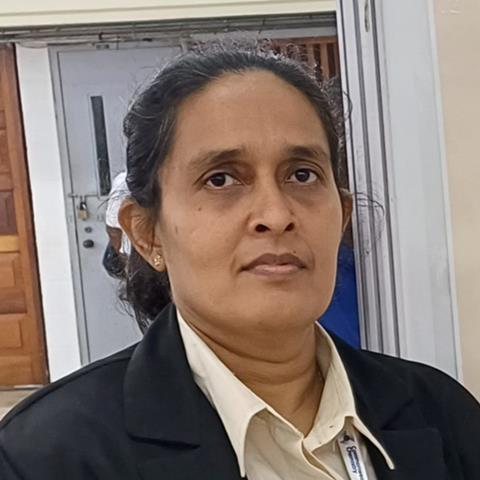
The work of Lata and her colleagues, which started with the detection of microplastics in the coastal areas of Fiji before expanding into different sources of drinking water, has led to the first baseline study on microplastics in drinking water in a Pacific island country.
In the study they collected samples of raw water from three rivers, a waterfall and a dam feeding the water treatment plants, as well as treated and tap water connected to the treatment plants. They also sampled rainwater, groundwater and three brands of bottled water sold in Fiji.
Lata and her team used hydrogen peroxide to digest organic matter in the water and density separation methods to offload the microplastics for analysis. They then used a light microscope to detect the number of microplastics, categorising the particles according to size, and used attenuated total reflectance–Fourier transform infrared (ATR–FTIR) spectroscopy to identify them.
‘The majority of the microplastics we found were either polyethylene – high density or low density – polypropylene, or polyethylene terephthalate,’ Lata explains. ‘Commonly used polymers used in takeaway boxes, cutlery, or shopping bags.’
Bottled water showed the presence of two types of polymers which were specific to the bottle type and the cap and so it was assumed that they were introduced through the bottling process.
‘The good thing was that in tap water, we were not able to see the more toxic [microplastics] that could be carcinogenic or mutagenic; we were not able to trace any polystyrene beads or polyvinyl chlorides,’ Lata says. ‘But … in the raw water supply we were able to find polystyrene … a little bit of polymethyl metacrylate, nylon and so forth.’
In principle, the drinking treatment process should be able to remove these pollutants, Lata explains, but sometimes in Fiji, where the population is expanding, the plants are often working at an overloaded capacity.
‘The water treatment plants were not designed to cater for such a big population,’ she says. ‘And due to climate change the situation worsens when we have very heavy rainfall – [the water] ends up having very high turbidity and then the water treatment process gets halted.’
Obtaining a continuous water supply is a major challenge in the country. At the hottest parts of the year some areas to go without water for three or four days. As a result, people’s priorities are, understandably, on having access to any water.
‘Public awareness on such emerging contaminants is very low and poor,’ says Lata. ‘People need water, they need a continual supply of it and getting that is an issue. Then on top of that you tell them that in the water you have [microplastics] … that’s a big problem that we are facing in the Pacific island countries [right] now.’
Lata’s work has gained the attention of the chief executive officer of the water authority of Fiji and they have been able to meet and discuss the idea of setting up catchment sites away from residential areas to help reduce the amount of pollutants entering the waterways.
‘The paper is [currently] under review, if it does go through then we can go ahead and discuss with the government,’ she says.
Light treatments in India
Chemist Rita Dhodapkar is the principal technical officer and science secretary at the Council of Scientific & Industrial Research’s (CSIR’s) National Environmental Engineering Research Institute in Nagpur, India. She is also the project coordinator of the Indian arm of Paniwater (Photo-irradiation and Adsorption based Novel Innovations for Water-treatment) – a consortium of researchers from across Europe and India who are developing six unique technologies for water treatment, three specific to drinking water.

In India – where a significant proportion of the population still lack access to safe drinking water – the main contaminants of concern are linked to microbial pollution. ‘In specific areas we have some geogenic contaminants like arsenic, fluoride, iron,’ says Dhodapkar. ‘But they are not all over. In India, we have safe drinking water supply systems but bacterial contamination is something we [all] have to deal with.’
The three technologies being developed by the organisation differ in how they function and their suitability for producing drinkable water at a community scale or at a household scale. The technologies work on raw water (rainwater, groundwater or surface water) and are designed to remove contaminants both known and of emerging concern, such as pharmaceuticals, hormones and antibiotic resistant bacteria.
The first technology is a multistep system which comprises a device combining filtration, adsorption and disinfection by LED-generated UV light. ‘Ultraviolet-C [UV-C] is a known disinfectant for household units … but we are replacing UV-C lamps with UV-C LED,’ says Dhodapkar. ‘This is mercury-free, and now that mercury is being phased out this becomes a really important invention. We have a wall mounted unit for households, then we have kiosks which serve about 3000 litres per day for the rural setup or a very urban setup, or a slum. We can even have these systems in schools.’
The second technology is an electrocoagulation system that combines removal of microbial and geogenic contaminants such as iron, arsenic or fluoride by electrocoagulation – an electrochemical process using an electric current, rather than chemicals, with in situ production of chlorine dioxide .
‘It is a total system for drinking water,’ explains Dhodapkar. ‘Apart from removing the geogenic contaminants it is also purifying it with respect to microbial pollution.’
Finally, Paniwater has developed a transparent jerry can, a technology constructed of UV-transparent, food grade material which uses sunlight to disinfect water at a household level, making it safe to drink. Jerry cans are commonly used across India to transport water meaning the solution is an item people are already familiar with which will hopefully optimise adherence.
The transparent jerry can – which can treat up to 10 litres a day – removes biological contaminants; if present in the water, it is able to reduce their active concentration to a level considered safe by the World Health Organization. The challenge now is to make each of these technologies – which are at a prototype stage – suitable for operating.
‘At the moment a lot of skill is involved to operate … it should be just switch on and drink the water,’ she says. In addition, they have to consider operating costs and affordability, which is why several of the technologies are solar powered so even if the electricity is not there, or it is intermittent, it still works.
And while there are always emerging contaminants and metals to contend with in the water supply, Dhodapkar accepts that Paniwater cannot address them all. ‘We cannot do everything but we have tried developing these three prototypes which will really help these specific problems.’
A range of remediation across south Asia
Laura Richards, a senior research fellow at the University of Manchester, UK, has worked on improving the quality of drinking water all over the world: Cambodia, Myanmar, India, Chile and, most recently, Uganda. The experience has enabled her to explore very different environments with contrasting geochemical settings, regulatory structures, and socio-economic conditions.

Comparing Cambodia and India, where Richards has spent much of her time, she says that although areas within the countries are quite similar in terms of hydrogeology they are quite different systems to study.
‘Cambodia is quite a pristine environment and very rural … but it is changing quite quickly as the capital – Phnom Penh – starts to expand out,’ Richards explains. ‘[And] because it’s a less perturbed system it’s somewhat less complex to understand the detailed geochemical processes that are occurring.
‘Whereas in India, in Bihar (a lot of our work is focused on the city of Patna) there’s just a lot going on – groundwater pumping, agricultural pumping, domestic pumping, pumping of municipal systems – there’s a lot more inputs and potential sources, particularly of emerging contaminants.’
Differences like these mean that remediation is not a one size fits all solution so it is important for Richards and her colleagues to identify an optimal selection of technologies or strategies that might work for a particular location. ‘First we need to understand what the problems are, then we need to understand what sources are contributing to that (natural or anthropogenic) and the geochemical processes driving that forward.’
The most common remediation methods are filtration-based technologies, which can come in a variety of sizes and use sand filters which may also have iron amendments to aid arsenic removal. Membrane technology is another common method but as it requires higher energy sources and maintenance it is not suitable for locations without electricity or renewable energy systems, Richards explains.
Source control and behavioural interventions such as switching to an alternative water source or drilling down deeper to access safer water sources are also an option in some areas, although potential future changes in water quality need to be considered too.
‘Important to all of these is monitoring,’ says Richards. ‘Different types of filtration systems can work very differently for different contaminants – even if you implement a system it doesn’t mean that it’s 100% effective … so there is a lot of scope for developing robust decision-making frameworks for locally relevant solutions to locally relevant problems.’
Her group is keen to adopt a holistic approach, rather than focusing on individual contaminants. ‘In terms of understanding the processes that are underpinning a lot of what’s going on environmentally, we need that … broader perspective,’ she says.
Now her focus is on building a picture of the water contaminants in different parts of Uganda. Her aim is to employ the same sampling methodologies and approaches used in India, including a community science approach involving schools, colleges and universities to trial water sampling and analysis.
‘It creates opportunities for student science projects and knowledge exchange but also gives us the opportunity to have more detailed and more expansive data sets,’ she explains.
Persistent pollutants in the UK
In addition to being a lecturer in water chemistry at Cranfield University, Emma Goslan works for the Drinking Water Inspectorate (DWI), part of the UK government’s Department for Environment, Food and Rural Affairs, carrying out research on their behalf, and also does research directly for UK water companies who will contact her about any issues they’re having.

‘Issues are country wide, but we have different areas that have different water qualities,’ Goslan explains. ‘If you have more river sources you’ll have more micropollutants such as PFAS, some sources might have a lot of organic matter which mean that they maybe have higher disinfection byproduct levels, and other sources might have more pesticides.’
‘But they’re all subject to the same regulations in the UK, apart from Scotland, which is following the EU directive.’
As a result, she says that the water produced in England, Wales and Scotland is ‘very high quality’.
‘I think the water meets [around] 99.7% of all the regulations required. And the industry is quite forward looking, in that it tries to anticipate the regulations and what it needs to do – there is recent guidance on PFAS so that is a big topic at the moment for water companies as they’re required to monitor.’
Goslan’s recent work has been on the removal of persistent mobile and toxic pollutants, or PMTs – a term used to cover a wide range of compounds that don’t break down and are hard to remove. These substances have a greater potential to pass natural barriers like riverbanks and migrate to groundwater and a greater propensity to break through in standard drinking water treatments. She has also worked on a similar project focused on organophosphate flame retardants, coatings that are on many commonly used products but which could have harmful effects on human health.
And although drinking water in the UK does not bring the same concerns as that in other countries around the world, maintaining the quality is not without its challenges, namely an increasing population coupled with decreased rainfall, particularly in the southeast of England.
‘We are also getting a lot of flash flooding which doesn’t help to top up the reservoirs or the rivers in the right way; if they’re flooding then the quality of the water is not the best,’ Goslan explains. ‘We can have the technology but if there’s not enough water, it’s tricky,’ she adds.
Julia Robinson is a science correspondent for Chemistry World

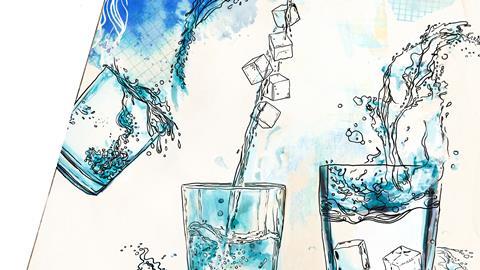





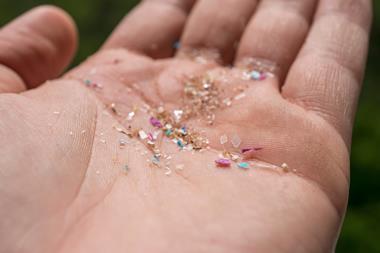
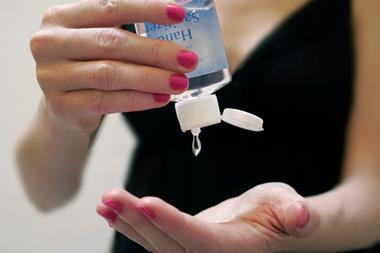
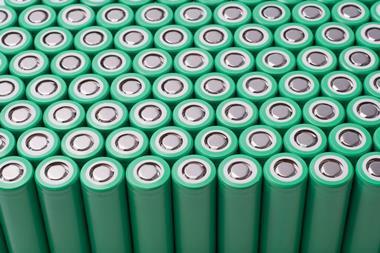

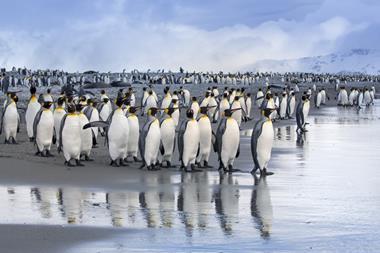






No comments yet